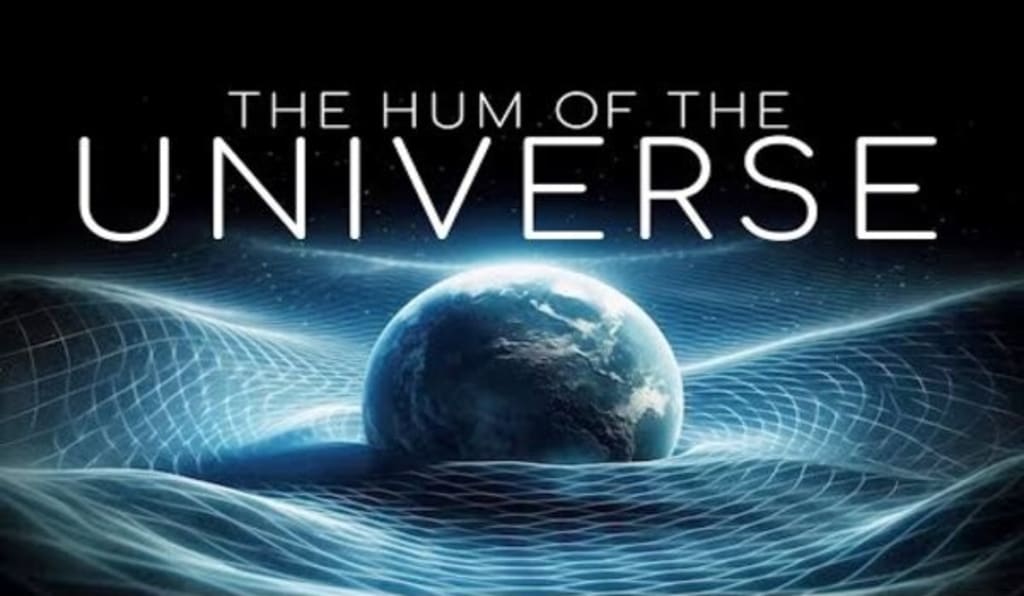The Mystery Behind the Hum of the Universe
After 15 Years of Observation, Scientists Have Successfully Detected the Gravitational Wave Background of the Universe

By using the right equipment, you can tune into the universe and hear it humming no matter where you look in the sky. However, this hum is not caused by sound, as it's not possible for sound to travel in the vacuum of space. Instead, we are talking about the hum of gravitational waves. A similar signal, the cosmic microwave background, was discovered decades ago and solidified the Big Bang's place as the leading theory of our universe's beginning. However, this signal was emitted almost 400 thousand years after the Big Bang, and if we want to go back earlier, we need a background signal made not of light but of the ripples of the fabric of spacetime.
In 2023, astronomers at the NANOGrav collaboration announced that they may have detected just that by using exotic stars as a galactic-sized gravitational wave detector to measure the faint hum of spacetime itself. This hum of gravitational waves might just be the reverberations of the very creation of our universe.
we covered the LIGO detector and how it uses lasers to precisely measure the minuscule changes in the length of a tunnel caused by gravitational waves passing through. However, LIGO is only sensitive to a specific kind of gravitational waves. Like light and sound waves, gravitational waves can come in different frequencies, and LIGO is only able to listen in to one part of this spectrum - the high frequencies.
That's why LIGO cannot listen in on the much earlier stages of these binaries when the objects are orbiting each other at a much greater distance. The gravitational waves they produce are of a lower frequency and energy and combine into one collective signal, rather than a great bang. The loudest contributors would consist of pairs of supermassive black holes, which are expected to be rare and form when two galaxies merge.
The remnants of galaxy mergers that we would hear most strongly are in the ultra-low-frequency range, specifically around the nanohertz range. However, just like how the human ear cannot hear sounds with ultra-low frequencies, we need specialized equipment to detect these gravitational waves.
LIGO is not able to detect the gravitational wave background, which is a collection of gravitational waves produced by various sources in the universe. This background offers a window into the very first moments of our universe's existence and could provide insights into galaxy mergers and black holes.
Unlike the cosmic microwave background, which is the earliest light we can detect, the gravitational wave background is not made of light but of spacetime itself. Therefore, it can penetrate past the plasma barrier that prevented light from moving through space for the first 400 thousand years after the Big Bang. This means that gravitational waves have been traveling since the very instant of the Big Bang and can offer us a glimpse into the universe's creation.
Primordial gravitational waves would have been produced with a high frequency, but because they have been traveling for so long, they would be greatly stretched by the expansion of spacetime and redshifted into ultra-low-frequency gravitational waves. To detect these waves, we would need a detector with tunnel arms much larger than anything we can build on Earth.
LIGO works by sending two beams of light along perpendicular tunnel arms and comparing them after they are reflected by mirrors at the ends of each tunnel. However, to detect ultra-low-frequency waves, we would need to look at changes over a much greater distance because the frequency of a wave is inversely proportional to its wavelength. For nanohertz waves, which take one full fluctuation to occur in a billion seconds, the wavelength would be around 1017 meters. Therefore, detecting these waves would require new technology and innovative methods.
To detect the ultra-low-frequency gravitational waves, astronomers at NANOGrav have come up with a clever solution. They utilize pulsars, which are ultra-dense neutron stars that emit precise pulses of light at regular intervals. These pulses serve as cosmic clocks, allowing us to measure the arrival times of the pulses from thousands of light years away.
By observing a group of 68 carefully selected pulsars, known as a Pulsar Timing Array, spread across the sky, astronomers can study how massive gravitational waves affect spacetime in all directions. These pulsars are chosen for their stability, with preference given to millisecond pulsars that complete millions of rotations per second. Their regularity makes them excellent timekeepers and enables us to measure any changes in the arrival times of their pulses over multiple years.
However, the measurements are subject to various factors that can introduce noise, such as the change in distance between Earth and the pulsar as they move through space. To distinguish the gravitational wave background from random noise, statistical analysis is used, specifically by considering correlations between pairs of pulsars in the array.
Similar to LIGO's dual tunnel setup, having two pulsars at each end of an imaginary tunnel allows astronomers to identify fluctuations that align between the pulsars. If similar fluctuations occur with two pulsars, it is unlikely that random noise would align in such a way as to make it appear that they are acting in unison.
By carefully analyzing the data from these pulsars and applying statistical techniques, astronomers can extract the gravitational wave background signal and gain insights into the earliest moments of our universe's existence and phenomena like galaxy mergers and black holes.
The recent discovery of the gravitational wave background by NANOGrav is an exciting development in our understanding of the universe. By using pulsars as cosmic clocks, astronomers have been able to detect the faint signal of gravitational waves that have been traveling through the universe since the Big Bang.
The Hellings and Downs curve provides strong evidence for the existence of a gravitational wave background, and while the error bars in the data are still quite large, the statistical significance of the result is at the 3 sigma level. As more data is collected and analyzed, astronomers hope to reduce these error bars and make an official discovery.
The gravitational wave background offers a window into the earliest moments of our universe's existence and could provide insights into phenomena like galaxy mergers and black holes. While we cannot yet pick apart the sources of the collective noise, we hope that these techniques will eventually allow us to listen in to specific supermassive black hole binaries and learn more about the creation of the universe.
Overall, this discovery is a testament to the power of scientific collaboration and innovation, and it opens up new avenues for exploring the mysteries of our universe.
About the Creator
Saomai2003
The universe is a vast and mysterious place that has fascinated humans for centuries. From the tiniest subatomic particles to the largest galaxies, the universe is full of wonders that challenge our understanding of the world around us.
Enjoyed the story? Support the Creator.
Subscribe for free to receive all their stories in your feed. You could also pledge your support or give them a one-off tip, letting them know you appreciate their work.






Comments
There are no comments for this story
Be the first to respond and start the conversation.